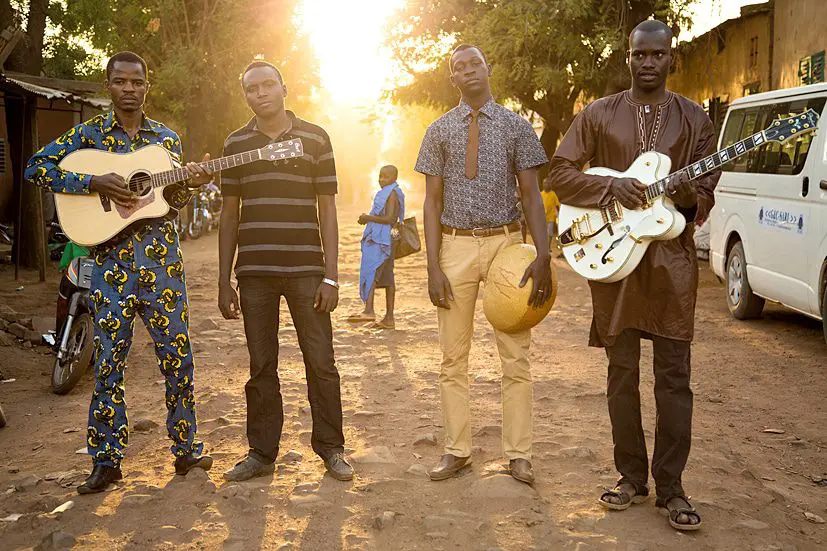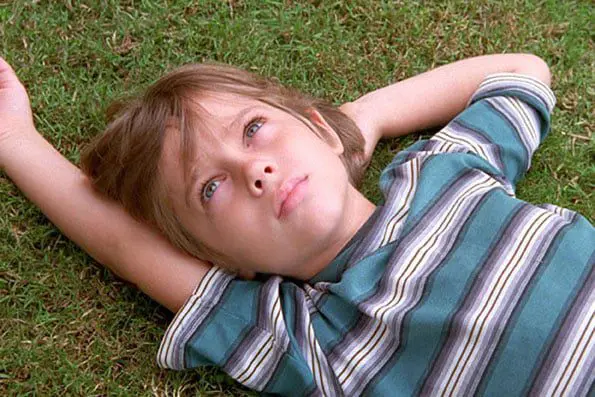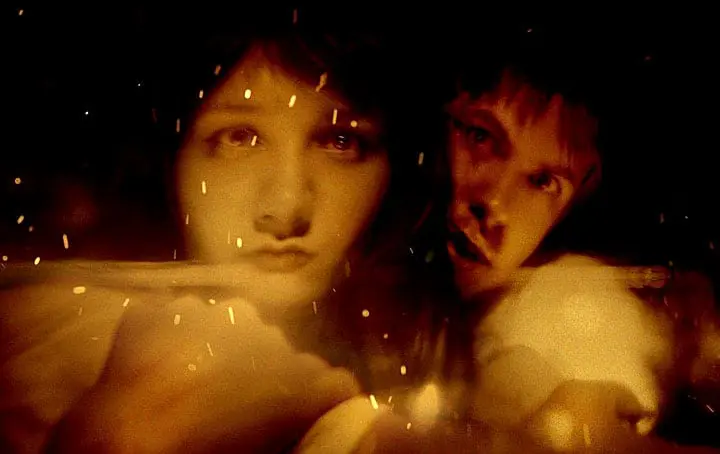I Am Belfast film review by Paul Risker
There are those actors that act with their eyes, and for this type of actor the eyes literally become the window to the soul of their performance.
The poetic voice of Mark Cousins is one of cinema’s distinctive voices that alongside Werner Herzog’s, another highly distinct one, is rich in character. In contrast to the words of his writing, the sound of his voice offers an alternative window to the soul of this critic/filmmaker.
Cousins’ voice has been a companion on memorable journeys both short (The Story Of Children And Film) and long (The Story Of Film: An Odyssey). But in I Am Belfast his voice merges with that of the human embodiment of Belfast (Helena Bereen), to hear a collection of stories from the lips of Northern Ireland’s troubled city herself.
What is a city ot what is our spatial home? How can this ‘what’ best be quantified? The first person phrase ‘I Am’ in the title of Cousins’ film casts this view of the city in iron like determined point of view. It is one that emerges from the subjectivity of the human embodiment of Belfast herself, and Cousins the filmmaker by way of a constructed conversation, although one in which he listens more than he speaks. Here the filmmaker has swapped roles from the guide through film history to the returning son that Belfast takes by the hand to tell her story. There is no objectivity here, only subjectivity, which is honestly admitted when Belfast says: “The painter Van Gogh once did a painting of flowers in a vase. But he didn’t call it Flowers In A Vase, he called it Colour Study. This is a colour study, steel grey and purple, a plan for a painting of Belfast of me, a self-portrait.” Perhaps Cousins’ film is bolder than Peter Bogdanovich’s interviews with Orson Welles that edited by Jonathan Rosenbaum carry the title: This Is Orson Welles. A consideration of these two titles – ‘This’ and ‘I Am’ – reiterates the determined view of I am Belfast. What may have started out as a portrait (‘This’) evolved into a self-portrait (‘I Am’) that is takes on a more authoritative tone. And yet the ontology of the film makes such a distinction between portrait and self-portrait a difficult one to sustain with absolute conviction.
“I was beautiful once” says Belfast. “I wonder if I became ugly, and if so what made me ugly; can you guess?” It is a moment that casts the city in a human likeness. The scars this particular city carries from the notorious troubles offers an image of both Jekyll and Hyde beneath its streets and landscape; the changing contours of its ageing human like skin. Yet age as it will, a city that rose through human grace and can fall or rather be stained by human wickedness has a life expectancy far beyond that of its creators – a permanent stage for generations upon generations to play out a multitude of existences that are both troubled and trouble free. It is a theme that resonates with strength – the neutrality of the spatial that is intruded upon by human spirituality, philosophy and ideology with potentially destructive consequences. And yet never is Cousins so cynical as to not understand that no matter how extreme the opposites in life are, the two of which are inevitably in flux, it continues to be a day-to-day truth for Belfast that is both a place of hope and despair. And the choice to cast Belfast as as a living and breathing woman creates a permanent link between human identity and space that Cousins strives for in his portrait, and which finds agreement in Belfast’s self-aware self-portrait.
Returning to Belfast’s words: “This is a colour study, steel grey and purple, a plan for a painting of Belfast of me, a self-portrait”, the film transcends such a simply defined preoccupation. I Am Belfast is a study in cinematography, but one in which we can hear the poetry of both voice and picture. Yet the filmic movement requires us to consider it as something more than verbal and pictorial poetry, and to look at the cinematography as a poetic dance that acknowledges the films movement and interaction.
“I’ll tell you the story of Belfast. Not the whole story because that would take years… Just bits like scenes from movies” she tells the off camera filmmaker to which he perhaps predictably answers: “I like movies.” “Sure don’t I know” she says. There is a deeply rooted acknowledgement of cinema within the fabric of the film, from the terrace of houses Belfast sees as being reminiscent of Hitchcock’s Marnie, to the references of Shadowlands, Thelma and Louise and The Birds. If I Am Belfast is a self-portrait then one can sense the influence of another influencing presence that questions the ‘self’ part of self-portrait as two personalities interact – the second personality of Cousins’ consciousness influencing Belfast’s psyche and sense of self.
Amidst the love, humour and laughter that is offset by the shadow complex of the city, or rather the shadow complex of its people, I Am Belfast is a canvas of emotions. Cousins has crafted a film that strikes the range of our emotional sensibilities, traversing the extremes of despair to hope. Belfast is a city defined by a human propensity for goodwill and cruelty, and the big themes of spirituality, philosophy and ideology that define civilisation are a double edged blade that nurtures, but also cuts the city so that’s its streets run with blood. And yet beneath all of this I Am Belfast can be described quite simply as one critic/filmmaker further exploring the intimate connection of space and character he has come to understand through life itself, as well as his role as spectator, filmmaker, critic and his reading around the subject.
Ironically I Am Belfast in as much as any film is made for an audience and should not be written about. Rather it should be encountered as a direct experience and seen as a human encounter that mirrors the shared moments between the two people in the film itself. There are moments where a film and a filmmaker force serious criticism to ask whether on occasion we should stay silent, although the adage that art is nurtured by discussion and can only thrive as a consequence of this adds a friction to such discourse.
I Am Belfast film was released theatrically in the UK on the 8th April 2016 by the BFI.









